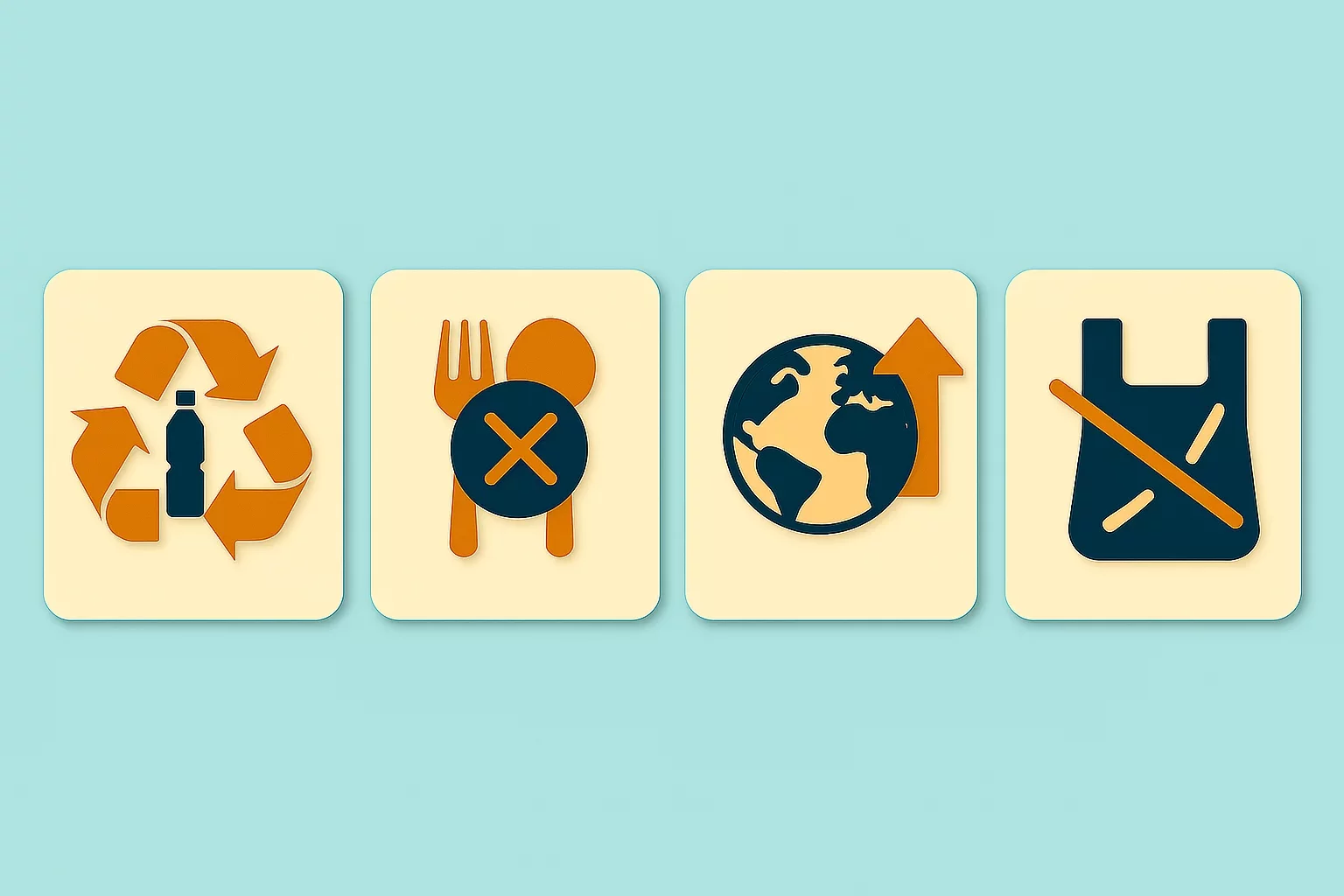Country Guide - VAT in Italy

VAT in Italy - Three Types of Rates
There are three types of VAT rates in Italy:
Standard VAT rate,
Reduced VAT rates,
Zero VAT rate.
How much is VAT in Italy Regions?
Under the EU VAT Directive, Livigno, Campione d’Italia, and the territorial waters of Lake Lugano, located on the border between southern Switzerland and northern Italy, are excluded from the scope of VAT Italy. Moreover, the Italian and Swiss governments agreed to introduce a local consumption tax in Campione d’Italia corresponding to Swiss VAT rates. Furthermore, Vatican City, as an independent city-state, falls outside the scope of local VAT.
VAT Registration Threshold
The Italian VAT legislation and Tax Authority guidelines provide essential details on the VAT thresholds in Italy.
There is no registration threshold for resident businesses. However, small businesses registered by individuals who are Italian residents can benefit from a simplified regime that allows them to exempt certain typically taxable supplies from VAT in Italy. To utilize a simplified regime, small businesses must meet specific criteria, mainly that the annual revenue does not exceed EUR 85,000.
The exact threshold rules apply to both resident and non-resident businesses, meaning there is no VAT registration threshold for non-resident businesses in Italy.
The EU defines the VAT registration threshold for intra-EU distance sales of goods and B2C supplies of services as EUR 10,000. Regarding the threshold for non-EU suppliers of Electronically Supplied Services, there is no registration threshold.
Italy implemented the EU SME scheme, setting it applies to taxable persons if their annual turnover in the entire EU does not exceed EUR 100,000 and if their annual turnover in Italy is below EUR 85,000.
Types of Taxable Activities in Italy
According to the Italy VAT Law, business and artistic or professional activities involving the supply of goods or services in Italy are considered taxable.
Thus, VAT is charged for the following taxable activities: the supply of goods and services in Italy for a fee, reverse-charge services received from the foreign taxpayer, importation of goods, and Intra-community acquisitions of goods into Italy.
VAT Registration Process
Since there is no VAT registration threshold in Italy, VAT Italy registration is mandatory for all individuals or businesses carrying out taxable activities. Failure to complete VAT registration in Italy can lead to potential penalties and fines.
Italian VAT Registration for Domestic Businesses
All businesses must be registered with the Register of Companies, even before initiating VAT registration. Different forms must be submitted depending on who is registering for VAT. If the individual carrying out the taxable activity is registering for VAT purposes, Form AA9/12 is required, whereas legal entities must submit Form AA7/10.
Forms can be submitted online or in digital format via the Single Businesses Reporting platform, Comunicazione Unica d’impresa.
Since activities performed by artists and other professional operators can be treated as taxable, they must use the same registration form as individuals and submit it online through the Fisconline or Entratel online services, personally at an Italian Tax Agency office, or by post.
Italian VAT Registration for Foreign Businesses
The Italian Tax Agency outlines several scenarios related to the VAT registration process for foreign businesses.
The first scenario involves foreign businesses that are permanently established in Italy. These businesses follow the same registration procedure, use the same VAT registration forms as domestic businesses, and must register as soon as they start taxable activity.
When foreign businesses, artists, and professional operators do not have a permanent establishment in Italy but carry out taxable activities in another EU Member State, they can register for VAT purposes before performing the taxable activity by submitting Form ANR/3 to the Tax Agency office in Pescara. Forms can be submitted in person or by post.
Non-EU taxable persons carrying out taxable transactions in Italy who appoint tax representatives are required to provide the Italian Tax Authority with a guarantee of at least EUR 50,000, valid for a minimum of 36 months. Once the so-called guarantee period ends, the non-EU taxable persons can operate without further obligation to provide financial guarantees.
VAT Returns in Italy
All VAT-registered businesses that conduct taxable activities in Italy are required to submit monthly or quarterly reports online using the F24 form. Quarter VAT returns are available for businesses that in the previous calendar year had a turnover no greater than:
EUR 500,000 for self-employed individuals and businesses providing services,
EUR 800,000 for businesses conducting other activities.
In addition to monthly and quarterly VAT returns, VAT-registered domestic or foreign businesses must also submit an annual VAT return that includes all transactions from the previous year.
Taxpayers have additional obligations related to settlements and VAT payments, including submitting annual returns. However, some specific groups of economic operators are exempt from doing so.
Monthly and quarterly returns must be submitted and paid by the 16th of the following month of the reporting period. In contrast, annual VAT return must be reported between February 1 and May 2 in the year following the reporting period.
Penalties for Failure to File Tax Return
Businesses that fail to file their VAT returns on time or submit false VAT returns might face severe penalties and interest, which depend on several aspects.
Non-compliance with VAT return filing can have a substantial financial impact on businesses. For instance, a penalty of between 120% and 240% of the due VAT, with a minimum penalty of EUR 250, can be imposed. For violations committed after September 1, 2024, the penalty is 120% of the due VAT.
Submitting false VAT returns that show a lower taxable income or a higher tax credit than the actual amounts can lead to penalties. These penalties can range between 90% and 180% of the exact amount of VAT due.
When businesses do not file a VAT return on time, the penalty depends on the period from when the return was due and when it was filed:
If businesses file the return within 90 days after the deadline (voluntary compliance), a penalty of EUR 25 (1/10 of the mandatory EUR 250 penalty) should be applied, added to the penalties and interest due on liable VAT.
If businesses file returns 90 days after the deadline, they are considered to have failed to file a VAT return, and penalties of 120% to 240% of the VAT due apply.
VAT Rules for Electronically Supplied Services
Under the EU VAT Directive 2006/112/EC, Electronically Supplied Services (ESS) are services provided through the Internet or other electronic means. Italy incorporated the EU-wide definition of the ESS as services that are provided automatically, with little to no human intervention, where the application of information technology plays a crucial role in delivering these services.
To avoid confusion, terms such as digital services, digital products, or electronic services are commonly used in other countries. Still, they all refer to ESS from the perspective of the EU VAT Directive.
Taxability Rules for ESS:
The general place of supply rules apply to the B2B supply of ESS. When it comes to the B2C supply of ESS, non-resident businesses must comply withEU-wide VAT rules, which stipulate that if the buyer is a natural person, the VAT rules of the EU country in which the consumer resides must be applied.
Annual turnover is the key information determining which VAT rate applies to distance sales of goods and B2C ESS. If the seller's annual turnover is below the EU-wide EUR 10,000 threshold, VAT rules of the seller's country apply, or they can choose to comply with OSS rules. In contrast, if the annual turnover exceeds the EUR 10,000 threshold, the seller must use the VAT rate of the Member State where the goods are dispatched or where the consumer is located.
How much is VAT in Italy on ESS?
The Italy VAT rate for ESS is 22%.
E-Commerce Rules
The EU-wide e-commerce rules underwent drastic changes on July 1, 2021, introducing significant novelties for e-commerce operators across the EU. Changes included the introduction of a consolidated annual threshold of EUR 10,000, a new One-Stop-Shop (OSS) system, and the establishment of the Import One-Stop-Shop (IOSS) for B2C sales of imported goods from non-EU countries, with a value of up to EUR 150.
In addition, new e-commerce rules introduced the deemed supplier rules, which apply to the distance sale of goods imported from outside the EU or the supply of goods within the EU to a non-taxable person where the underlying supplier is not established in the EU.
Under the new e-commerce package, the previously established MiniOne Stop Shop was extended so that now the new OSS system includes three schemes:
Union Scheme,
Non-Union Scheme,
Import Scheme.
VAT EU Reporting
In Italy, there is an Intrastat return, known as the combined Intrastat-ESL, which serves both statistical and fiscal purposes.
Intrastat
Monthly Intrastat returns are required when the total amount for the Intra-Community acquisition of goods exceeds EUR 200.000 in the previous four quarters. Monthly reports are also necessary if the Intra-Community acquisition of services in the last four quarters exceeds the EUR 100.000 threshold. The return must be submitted by the 25th of the month following the reporting period.
If the total amount of the transaction related to intra-Community acquisitions does not exceed EUR 50,000, quarterly Intrastat returns are permitted. However, those who must submit quarterly returns may opt to submit monthly returns, but they must do so for the entire calendar year.
Digital Reporting
Local Businesses
Italy was the first country in the EU to implement rules making e-invoicing mandatory for local businesses for B2B and B2G transactions, even before the European Directive 2014/55/EU mandating e-invoicing for public administrations at the EU level.
The e-invoicing system in Italy operates through a single exchange system called Sistema di Interscambio (SDI), which is managed by the Revenue Agency. Taxpayers can use this system to receive, check, or send invoices to public administrations, clients, and customers.
The Italian government gradually introduced e-invoicing obligations, starting with B2G in 2014, followed by B2B and B2C in 2019.
Featured Insights

Angola’s E-Invoicing Mandate: Phased Implementation Continues Into 2026
🕝 December 10, 2025
VAT Deduction and Business Succession: When Do Advisory Costs Serve the Company’s Interest?
🕝 December 8, 2025
Europe’s Plastic Fiscal Shift: Why Italy’s Plastic Tax Now Starts in 2027
🕝 December 3, 2025
The Decline of Low-Value Import Exemptions: Closing Gaps in Cross-Border E-Commerce
🕝 November 20, 2025More News from Italy
Get real-time updates and developments from around the world, keeping you informed and prepared.
-e9lcpxl5nq.webp)






-7xsxxoypnx.webp)
-o7f4ogsy06.webp)
-9mc55kqwtx.webp)
-jrdryw2eil.webp)
-t9qr49xs2u.webp)

-zetvivc79v.png)
-qizq6w2v5z.png)

-k1j4au0ph6.webp)
-ig9tutqopw.webp)






